Exploring ecosystem restoration via Preferred by Nature's training in the magnificent Maliau Basin
Preferred by Nature recently organised a training on ecosystem restoration and carbon initiative in the breathtaking Maliau Basin, Sabah, Malaysia. Embark on a captivating journey through a participant's narrative, as they vividly recount their experience from the training.
Ecosystem restoration has become increasingly vital in addressing the mounting human pressures that degrade and threaten ecosystems, with climate change being a prominent factor. Human activities, such as deforestation, industrial pollution, overexploitation of resources and urbanisation, exert tremendous pressure on ecosystems.
This decade 2021-2030 has been devoted as the Decade of Ecosystem Restoration by the United Nations. This biggest global organisation has recently launched a global initiative to incorporate ecosystem topics as part of the formal training, highlighting the role of education in helping to restore the world’s degraded ecosystems.
Ecosystem Restoration and Carbon Initiatives: A practical course in the Borneo Rainforest
Built on the success of the first in-person ecosystem restoration training in Romania last October, Preferred by Nature organised a practical course, combining theory and field experience in Borneo in May 2023.
The five-day training in 'The Lost World of Sabah' allowed participants to fully immerse themselves in the world of ecosystem restoration. As a member of Preferred by Nature's Communications team, I had the privilege of joining this course as a fellow participant to provide first-hand reporting on the experience.
Day 0:
A diverse group of participants from various backgrounds and regions eagerly took part in the training. They represented esteemed organisations such as Proforest, Sime Darby Property Berhad, Indika Nature, Union for Ethical BioTrade (UEBT), and Yayasan Sabah Group, hailing from countries such as Malaysia, France, China, Denmark, Indonesia, Thailand and Vietnam.
We arrived at Tawau Airport just before noon, where the training team had arranged smooth group airport transfers. The journey from the airport to Maliau Basin typically takes around five hours. This vast expanse, spanning approximately 58,840 hectares, is renowned for its rugged terrain, characterised by deep valleys, steep escarpments and dense rainforest canopies. Within this biodiverse basin, a remarkable array of plant and animal species find their home.
The term "basin" refers to the distinctive geological formation that gives rise to a massive water catchment. All water sources within the basin flow into the Maliau River, which serves as the sole outlet. From there, the water continues its journey, coursing through the Kuamut River until it eventually reaches the Kinabatangan River. This highlights the vital role of Maliau Basin as a watershed for downstream rivers.
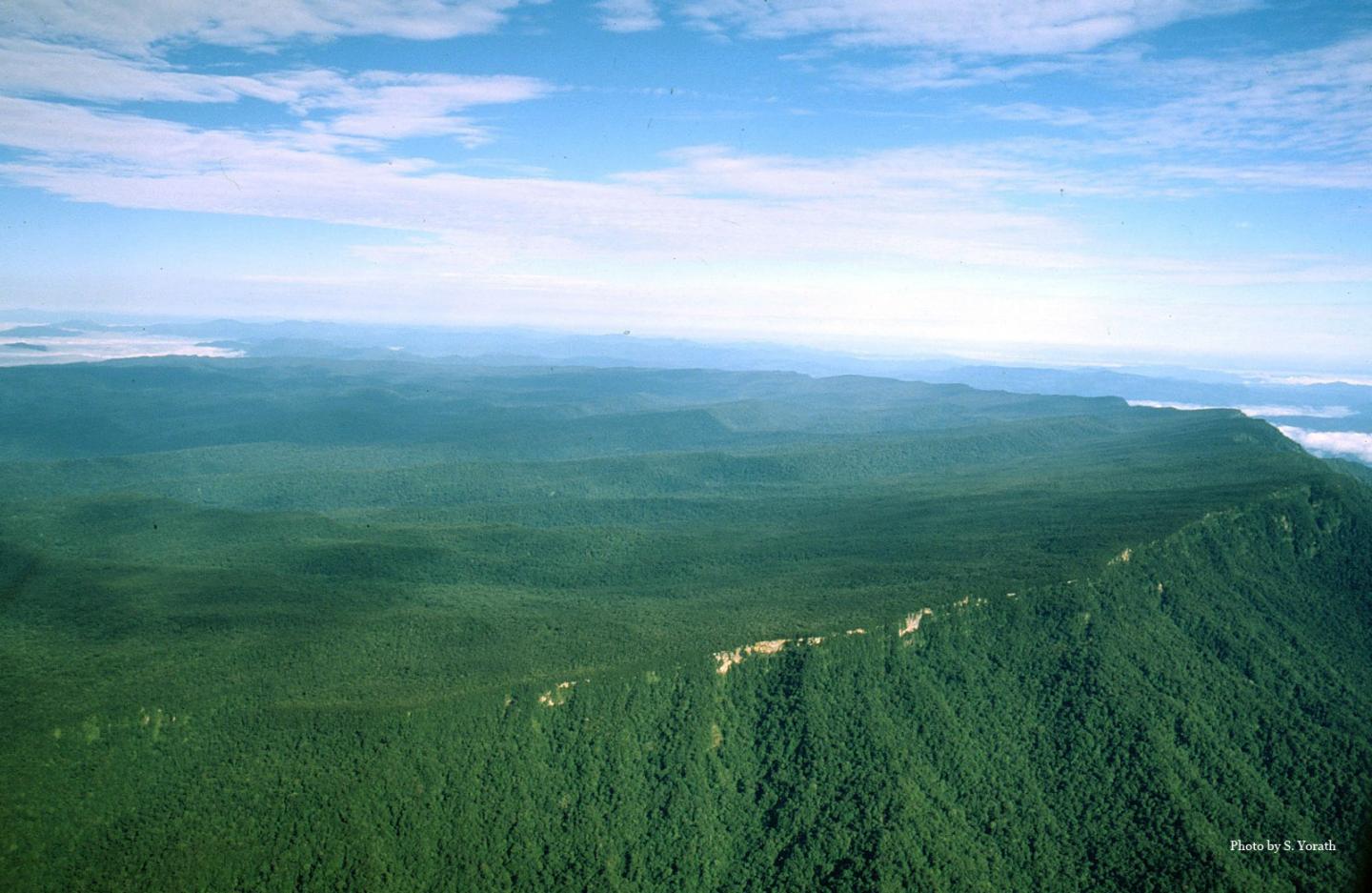
The basin features a circular depression surrounded by steep cliffs, resembling a natural amphitheatre. Its formation is believed to be the result of a collapsed volcanic caldera that occurred millions of years ago. These encircling cliffs serve as natural barriers, isolating the basin and contributing to its exceptional ecological preservation.
Often described as a natural laboratory, Maliau Basin remains relatively untouched by human activity, making it a sanctuary for scientific research and conservation efforts.
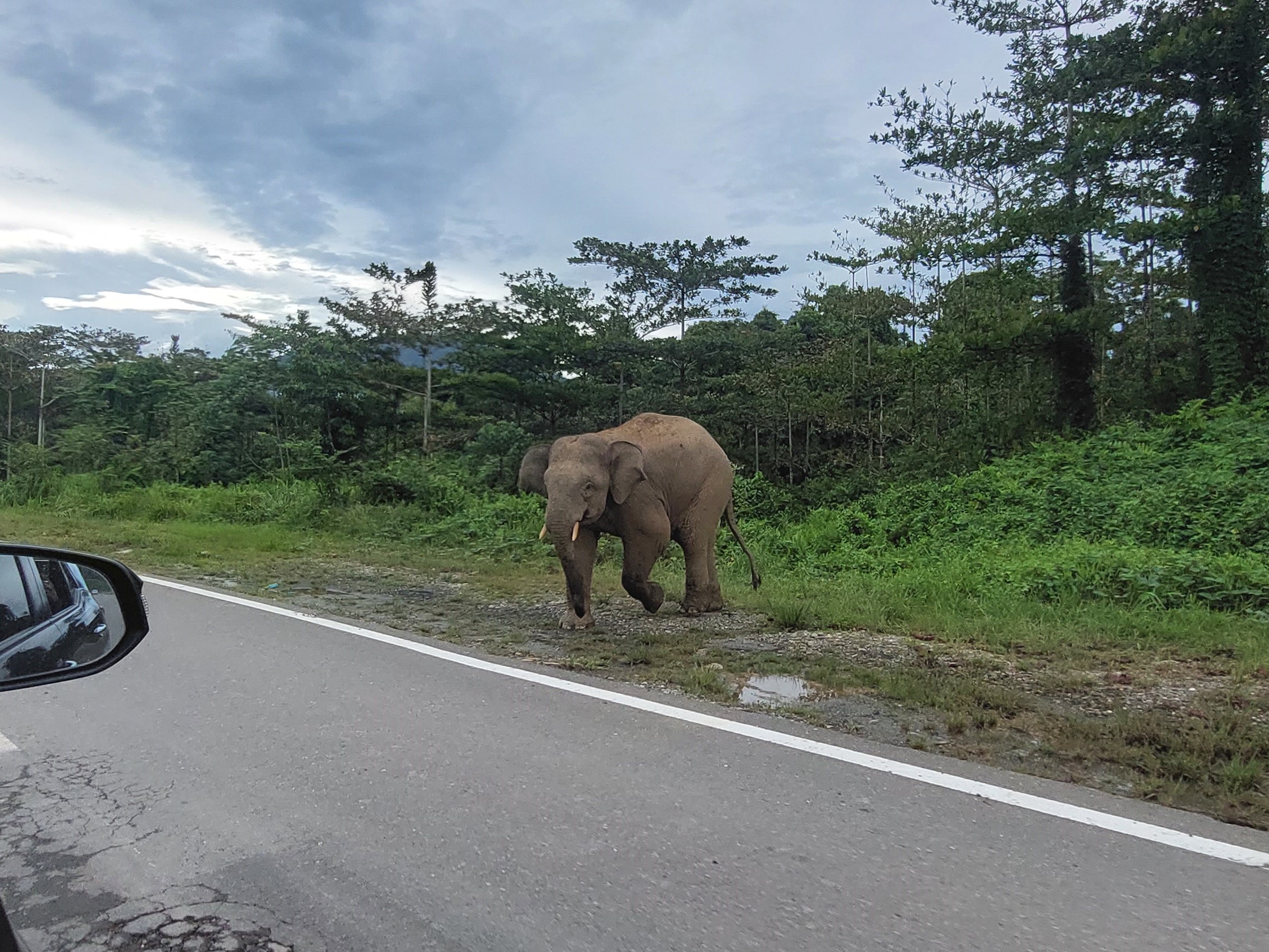
After a five-hour journey on rocky roads, with breathtaking vistas of lush greenery and wildlife sightings, such as the Bornean elephant, we finally reached the Maliau Basin Conservation Area (MBCA). Contrary to my expectations of a more rustic living arrangement, I was pleasantly surprised to find that the centre was well-equipped with all essential amenities, including clean running water, electricity and comfortable accommodations.
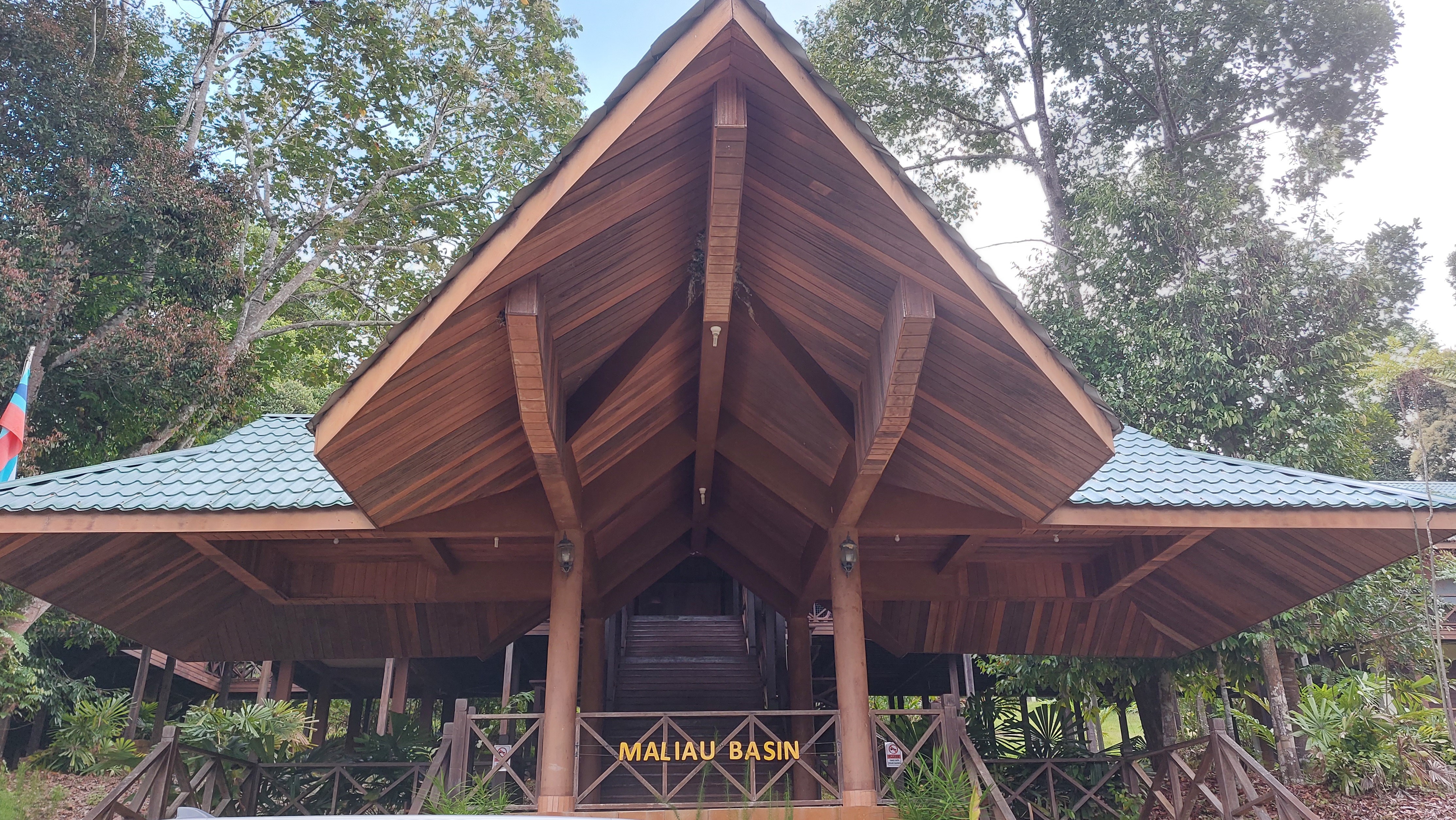
Later in the evening, we savoured a delectable dinner of local cuisines. Subsequently, Mr Robinson Rozali Rustin, the manager of MBCA, delivered a welcome note and provided us with a briefing on the Do's & Don'ts while living in the conservation area.
Day 1:
We began the day at dawn with a birdwatching session around the studies centre, led by the MBCA Rangers. It was an exciting experience, and we had the opportunity to explore the surrounding area while spotting rare and endangered species such as the helmeted hornbill and broadbills.
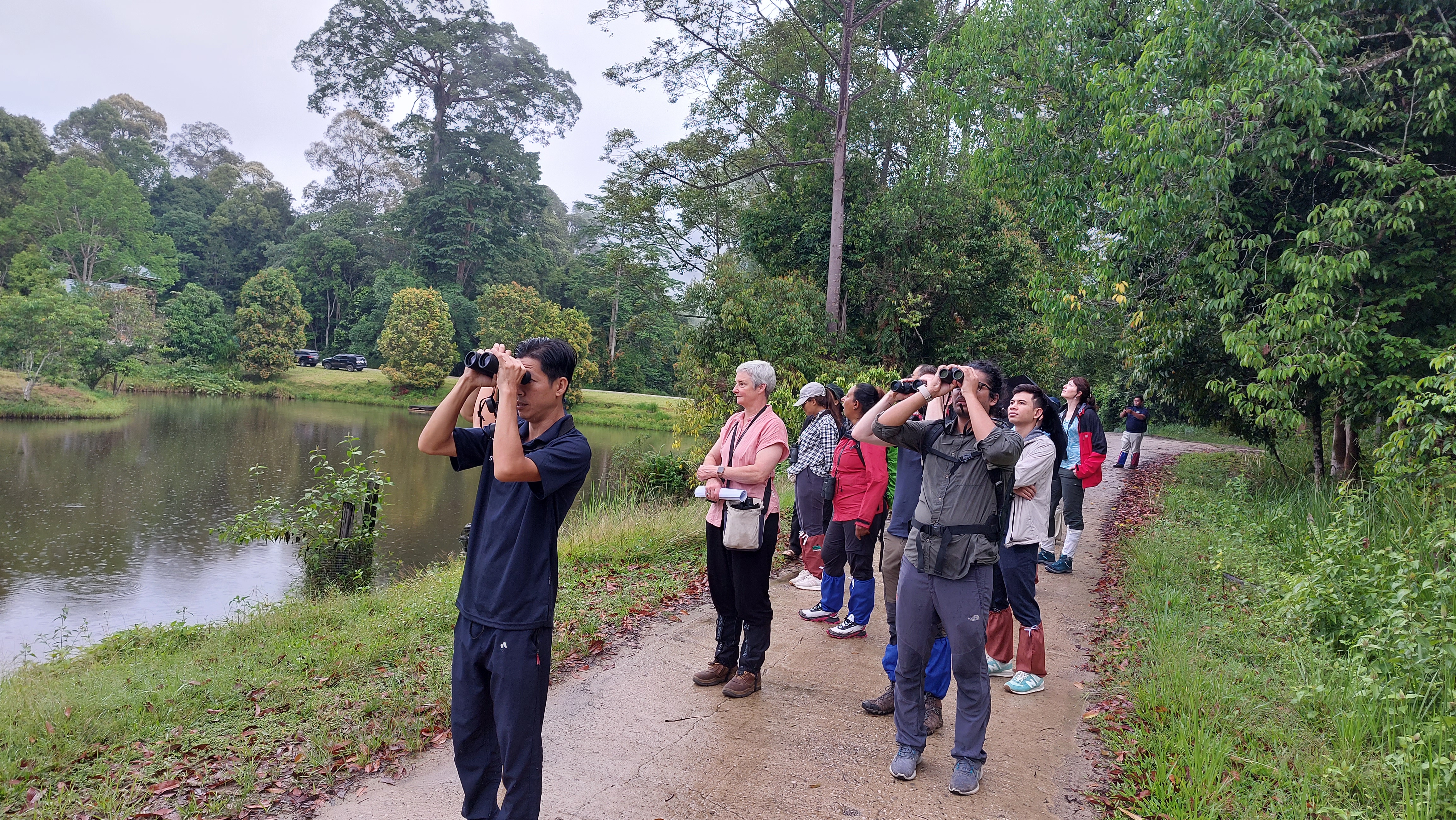
Following the birdwatching session, we gathered in the conference room at the study centre to officially commence the training. Led by Trainer, Mateo Cariño Fraisse and Co-Trainer, Malory Weston, as well as Trainers-in-training, Nicholas Fong and Hue Su Wah, we received an introduction to the course. We were then divided into three groups, which would be our working groups for the course exercises.
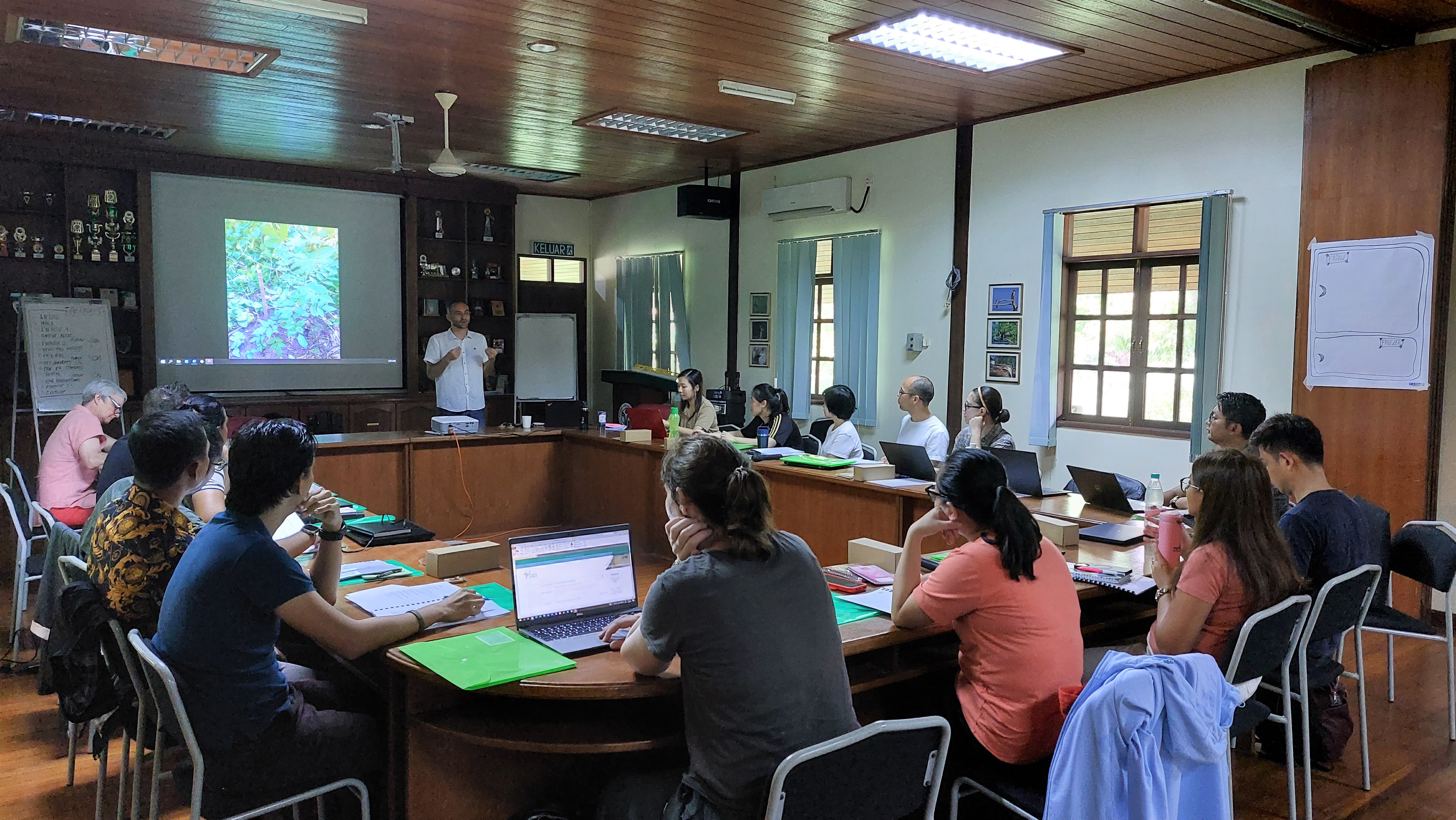
On the first day, we kicked off the training with a session led by Trainer Malory Weston on the basic considerations for verifying projects. This session provided us with valuable insights into the factors to consider and equipped us with the necessary knowledge and etiquette for conducting audits.
This was followed by presentations on ecosystem restoration and nature-based solutions carbon projects, key concepts in land-use carbon initiatives, greenhouse gas calculations in carbon initiatives, as well as an overview of Preferred by Nature's Ecosystem Restoration Standard.
We also delved into the realm of social considerations within ecosystem restoration projects. Under the guidance of Trainer Mateo Cariño Fraisse, we were introduced to a variety of concepts connected to ecosystem restoration such as power relations, governance, Free, Prior and Informed Consent (FPIC), and the International Labour Organization (ILO) conventions. Emphasis was given to the crucial role of local and Indigenous communities in the success of ecosystem restoration projects by leveraging their traditional knowledge.
After a day filled with comprehensive learnings, we embarked on a night drive before retiring for the night. Boarding an open-air safari truck led by the rangers, we explored the night scene at Maliau Basin. It was a privilege to spot a leopard cat, otter civet and the sambar deer. Throughout the drive, the dark night skies were illuminated by bright shining stars while on the ground, fireflies sparkled all around us.
Day 2:
We started the day with a practical exercise on assessing the carbon potential in Maliau Basin, which involved fieldwork. This time, the training took place right on the camping grounds of the centre. Applying the lessons from the previous day, we explored different parts of the Maliau Basin area, including the primary forest, secondary forest and grasslands, while evaluating the carbon potential.
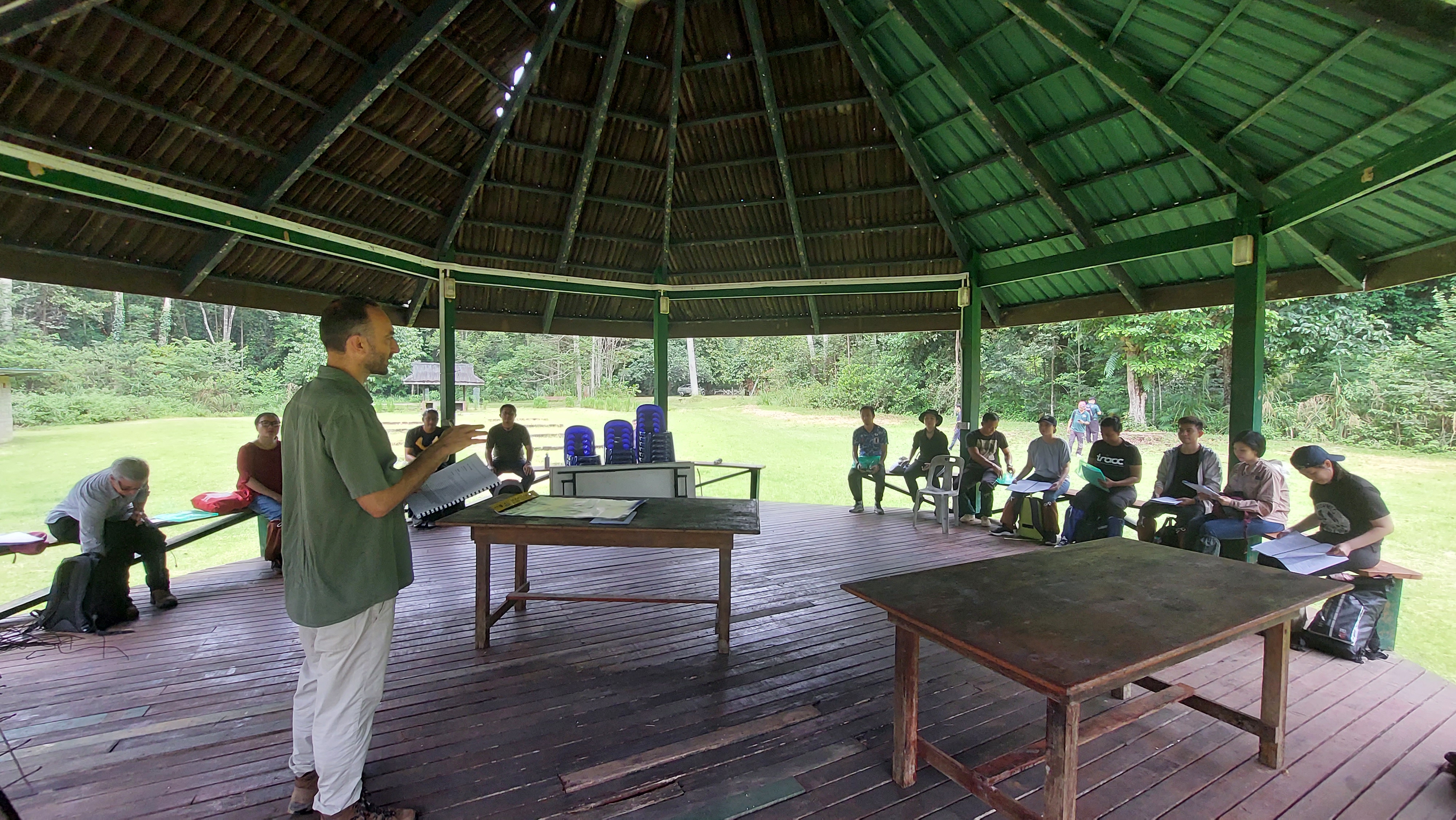
The primary forest comprises towering trees, reaching heights of tens of meters above the forest floor. As part of our exercise, we embarked on a challenging climb to the canopy, the uppermost part of the trees.
The trees are interconnected by suspension bridges constructed from Belian wood, known for its exceptional strength. These bridges allowed us to traverse from one tree to another, granting us a unique vantage point to observe the surroundings. Despite the nerve-wracking sensation of walking across the bridge with an expanse of trees below and around us, the experience was truly rewarding. The fresh air and breathtaking views of the captivating canopy made it all worthwhile.
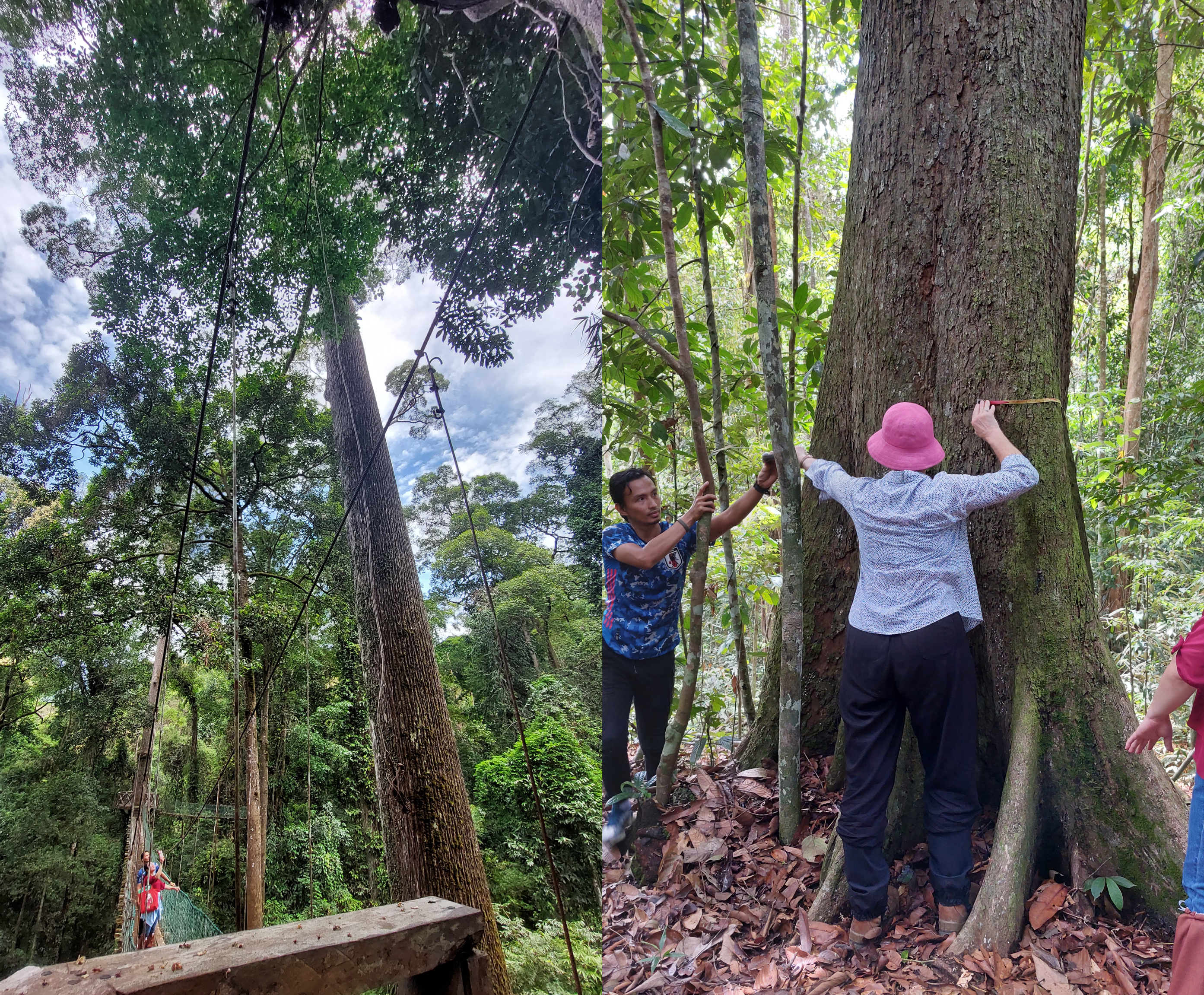
For many of us, it was the first time we had the opportunity to measure trees and calculate their carbon potential by identifying the diameter at breast height (DBH) and height of the trees. Trainer-in-training Hue Su Wah led this exercise, alongside the other trainers who were on the ground to provide guidance and explain the process as needed.
Later, we reconvened at the conference room, where we delved into a case study on community-led ecosystem restoration in Bolivia.
Day 3:
The day kicked off with more ecosystem restoration case studies. It was particularly fascinating to learn about the diverse approaches to restoration practices, from savannahs in Kenya to mangroves in Madagascar.
In the afternoon, we made our way to INIKEA, an ecosystem restoration project by IKEA and the Sabah Foundation that began 25 years ago. The journey to Luasong town, where the INIKEA project is located, took approximately two hours. The participants were divided into groups, and the training programme had arranged 4WD vehicles to transport us.
Upon arriving at the Luasong Resthouse, our accommodation for the night, we were warmly greeted by the staff and received welcoming notes from Mr Royston Fahd Ajin, a manager in the INIKEA project. We received a briefing on the objectives and progress of the INIKEA project, which provided valuable insights.
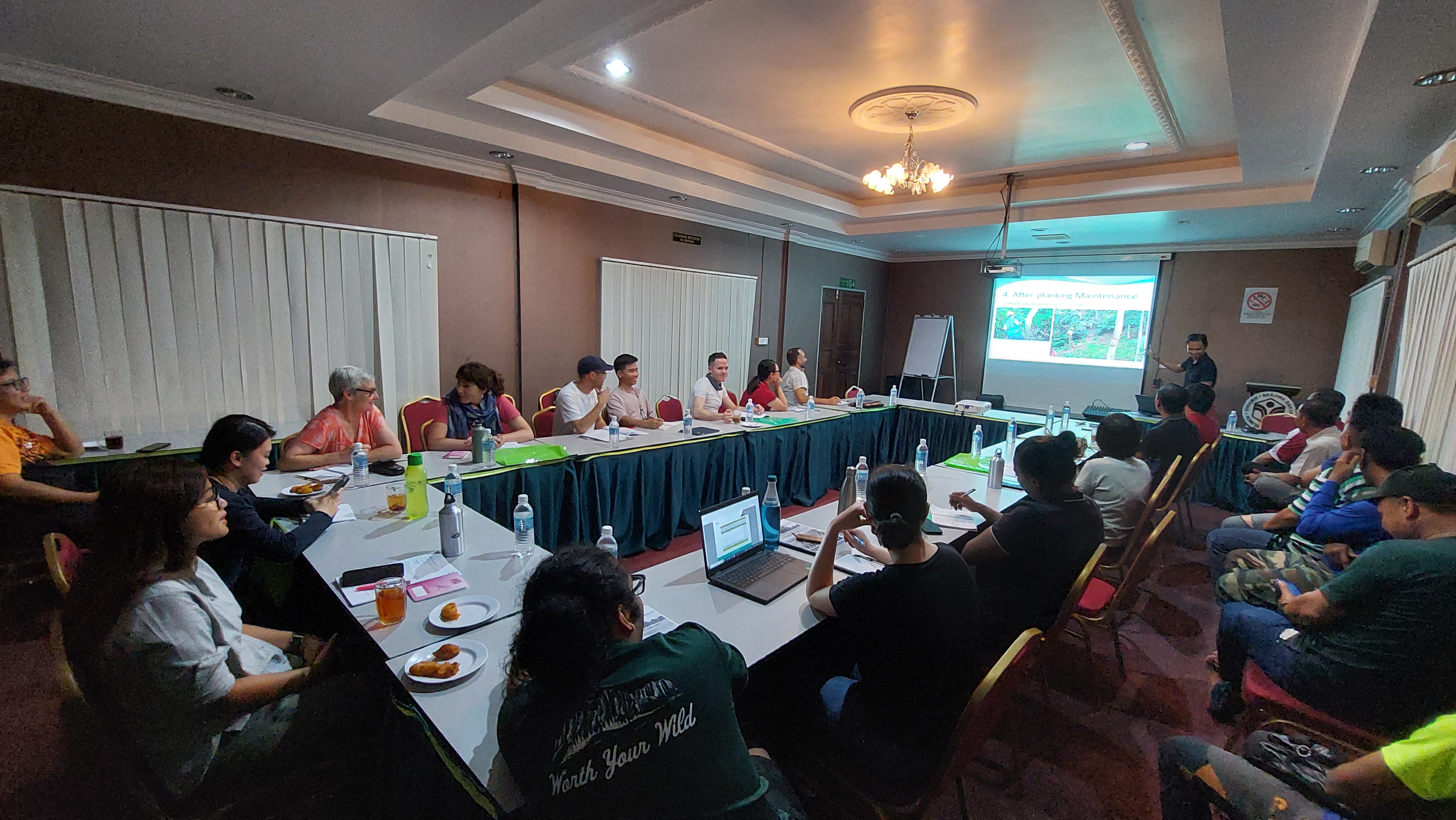
Our next task was to analyse INIKEA's Plan of Operations (POO) and prepare for field visits and interview sessions scheduled for the following day. Trainer Mateo Cariño Fraisse informed us that it will be a full-fledged mock audit, requiring us to apply Preferred by Nature's Ecosystem Restoration Standard and utilise the knowledge gained in previous days to navigate the process effectively.
Day 4:
We started our day bright and early, despite many participants staying up late to complete the preparations for the day's activities. However, we made sure to return to our rooms before 11pm – that was when the electricity generator turned off for the night.
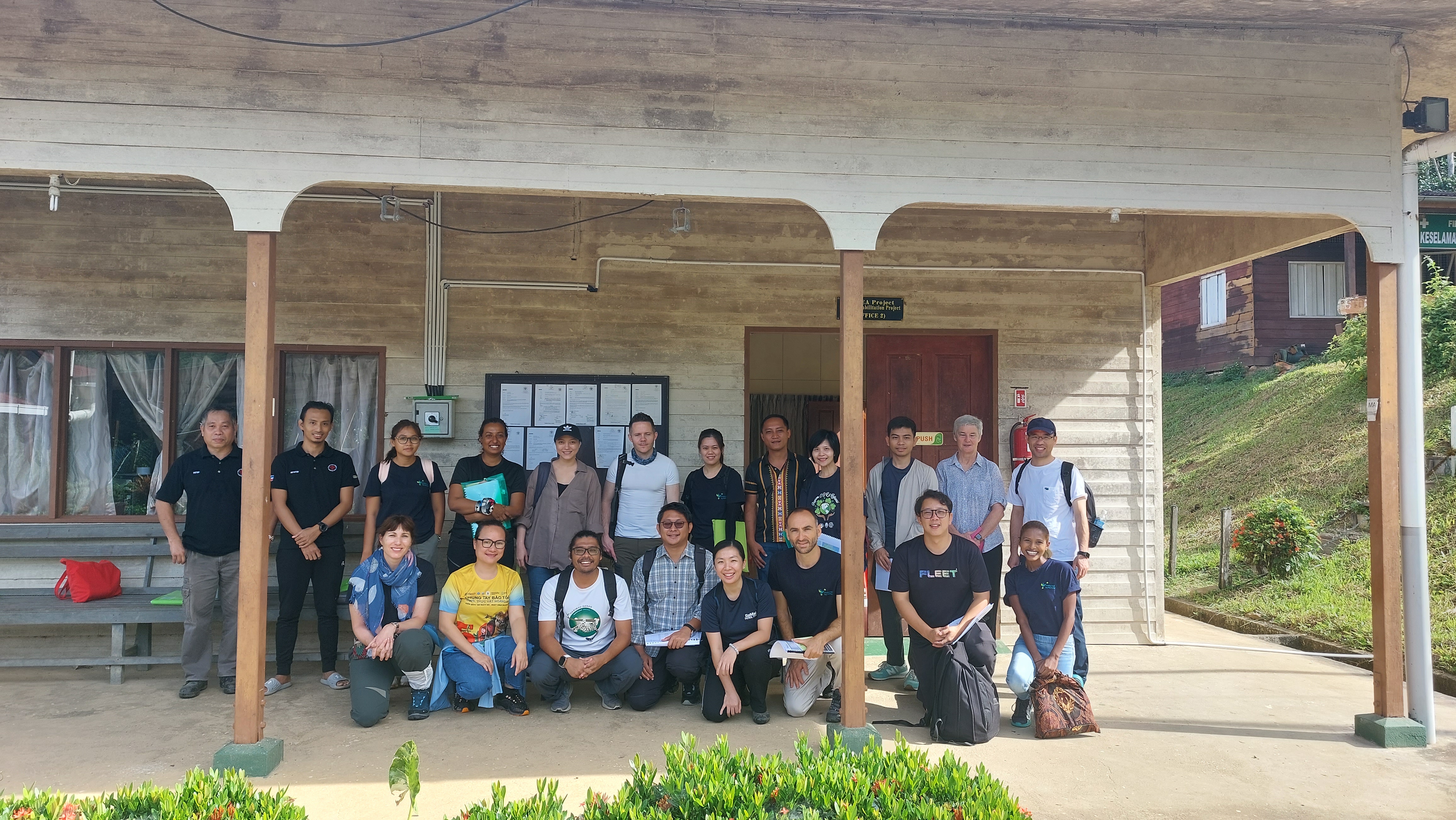
We headed to the INIKEA management office in Luasong for the audit opening meeting. Each group had elected an audit team leader who conducted the opening meeting while the rest of us observed. As the management team was more comfortable speaking in Bahasa Malaysia, periodic translations were provided by the team leaders to ensure everyone understood throughout the interview session.
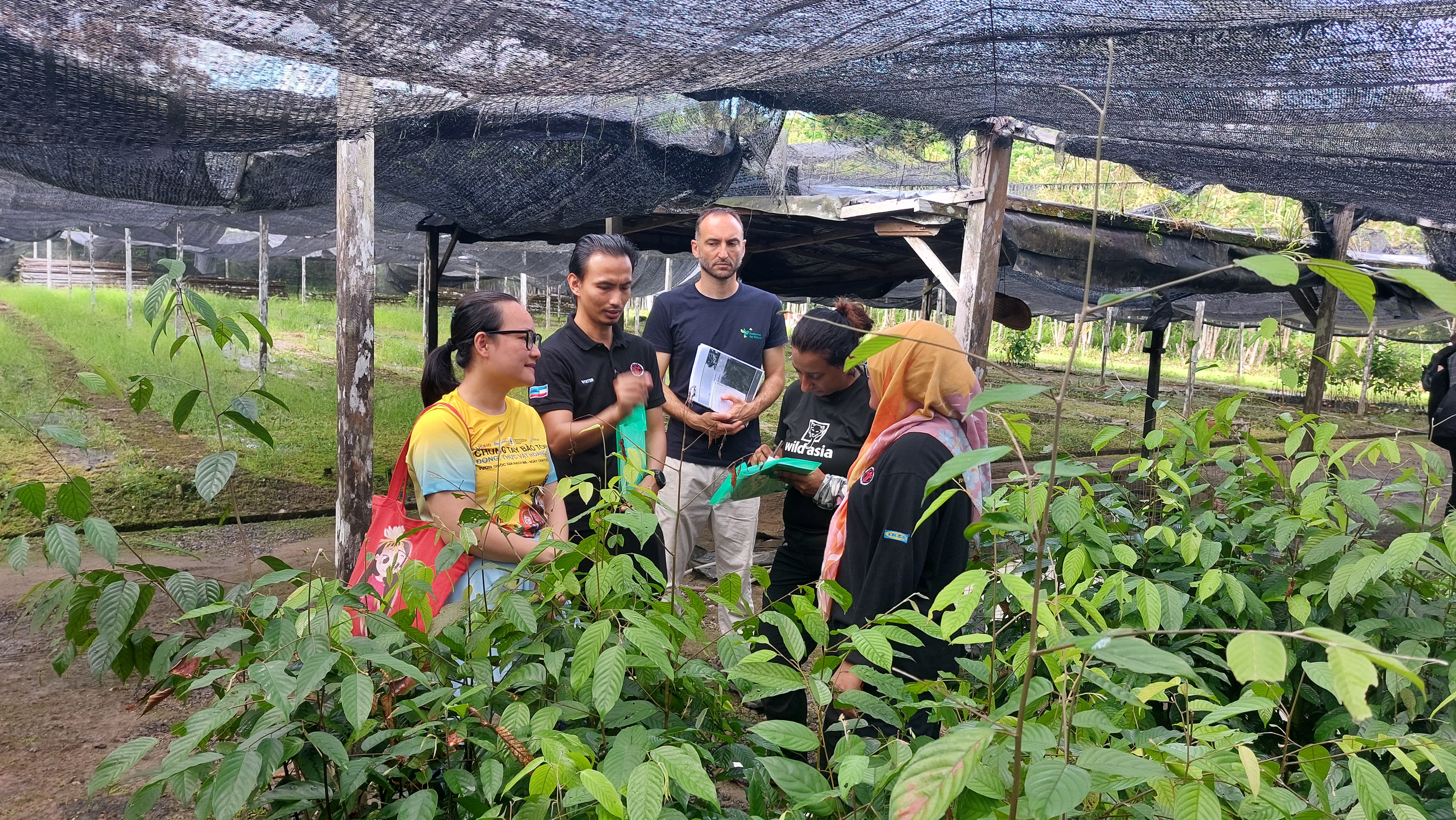
Afterward, we visited the nursery to speak with workers and gain insights into their working conditions, safety measures and satisfaction levels. It was a valuable opportunity to engage with the local community and gain first-hand knowledge of their experiences. We also visited the workers' campsites and explored the plots of land where restoration work was being carried out. Throughout the process, we diligently took notes to ensure accurate reporting.
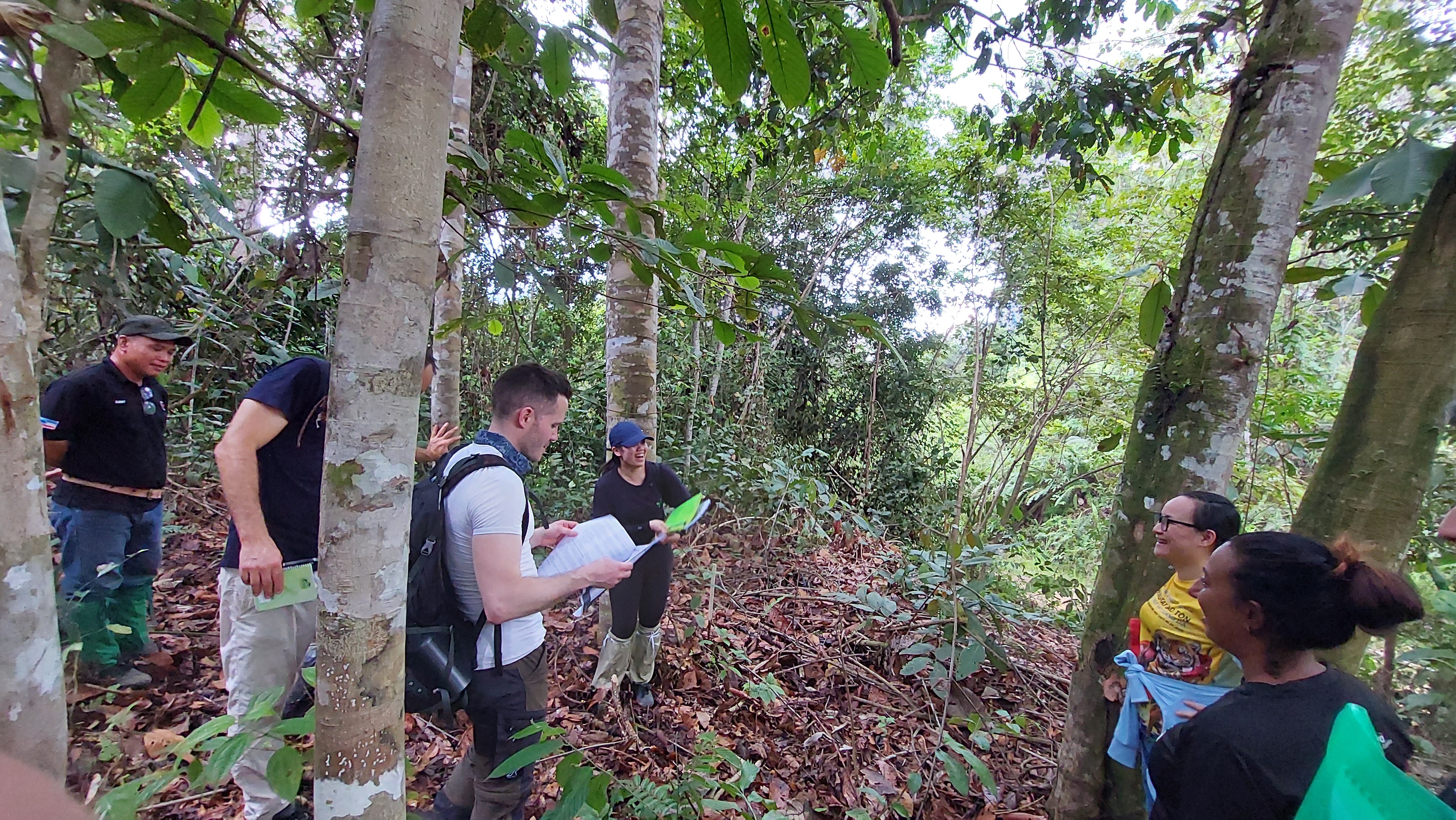
We paused for a picnic-style lunch in the forest, enjoying packed nasi lemak, a local Malaysian dish, beside a tranquil river stream. Later, we crossed this river barefoot to observe another plot of land where line-planting was implemented.
Just as rain clouds were gathering, we left the INIKEA forest project area and returned to the MBCA.
Day 5:
On the last day, the teams gathered at the dining hall earlier than usual to finalise our audit findings from the previous day. The trainers informed us that each team leader would present their findings in a mock closing audit meeting.
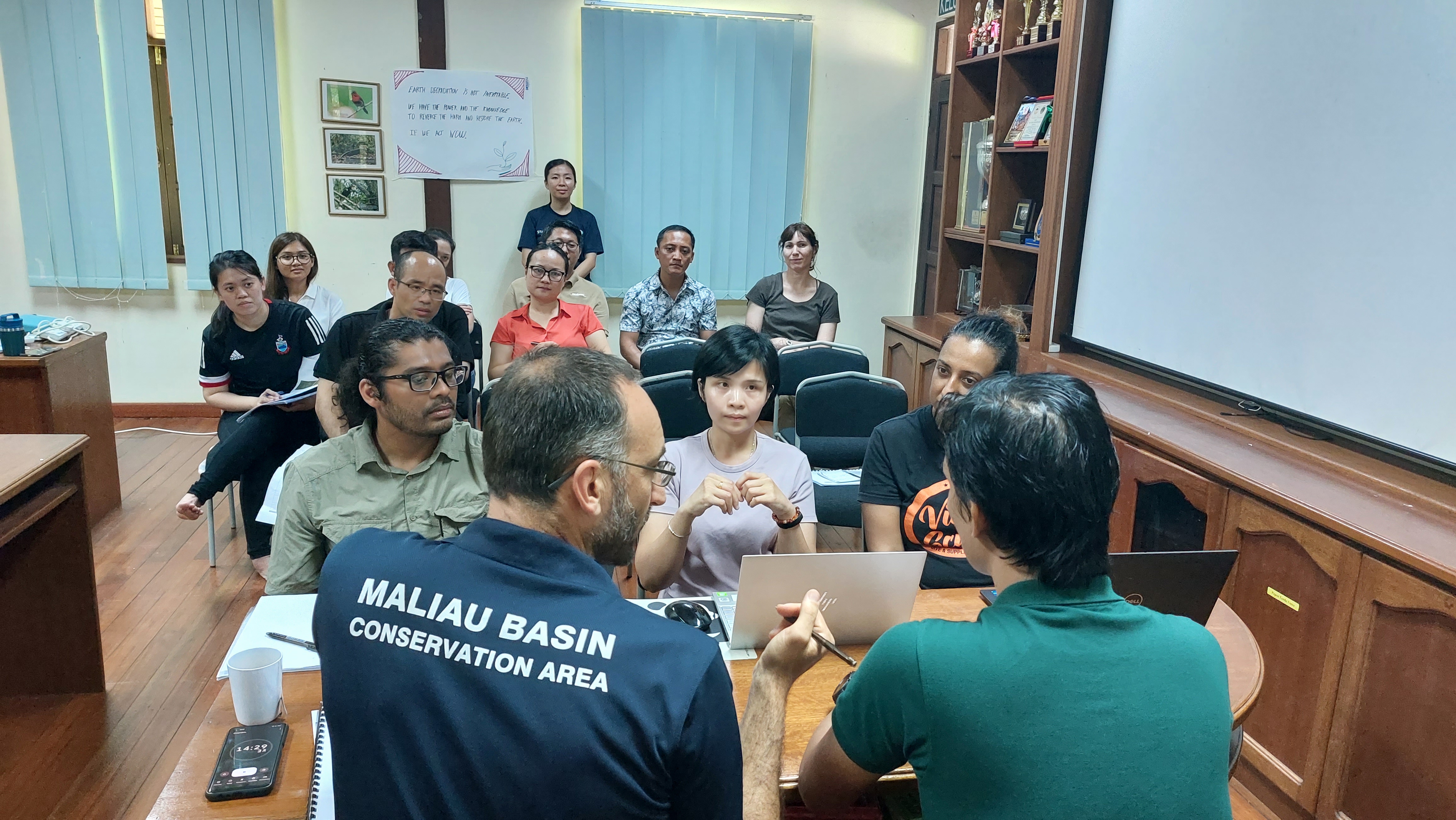
The team leaders presented their findings, and we witnessed directly how unexpected deviations can occur compared to our prepared expectations. It was evident the importance of adaptability and firmness in auditing. We concluded the training course with a session by Trainer-in-training Nicholas Fong on the High Carbon Stocks Approach. Using his experience in this field, Nicholas Fong provided us with an in-depth look into these approaches and how they connect to the MBCA or any other ecosystem restoration projects/sites.
This was followed by an exam, where we had to demonstrate our learnings from the five-day course.
As the sun set, we gathered at the dining hall for a final get-together. It was a joyful evening filled with dancing, singing and laughter in every corner. While many of us were relieved that the exam was over, it was a bittersweet moment knowing that the course had come to an end.
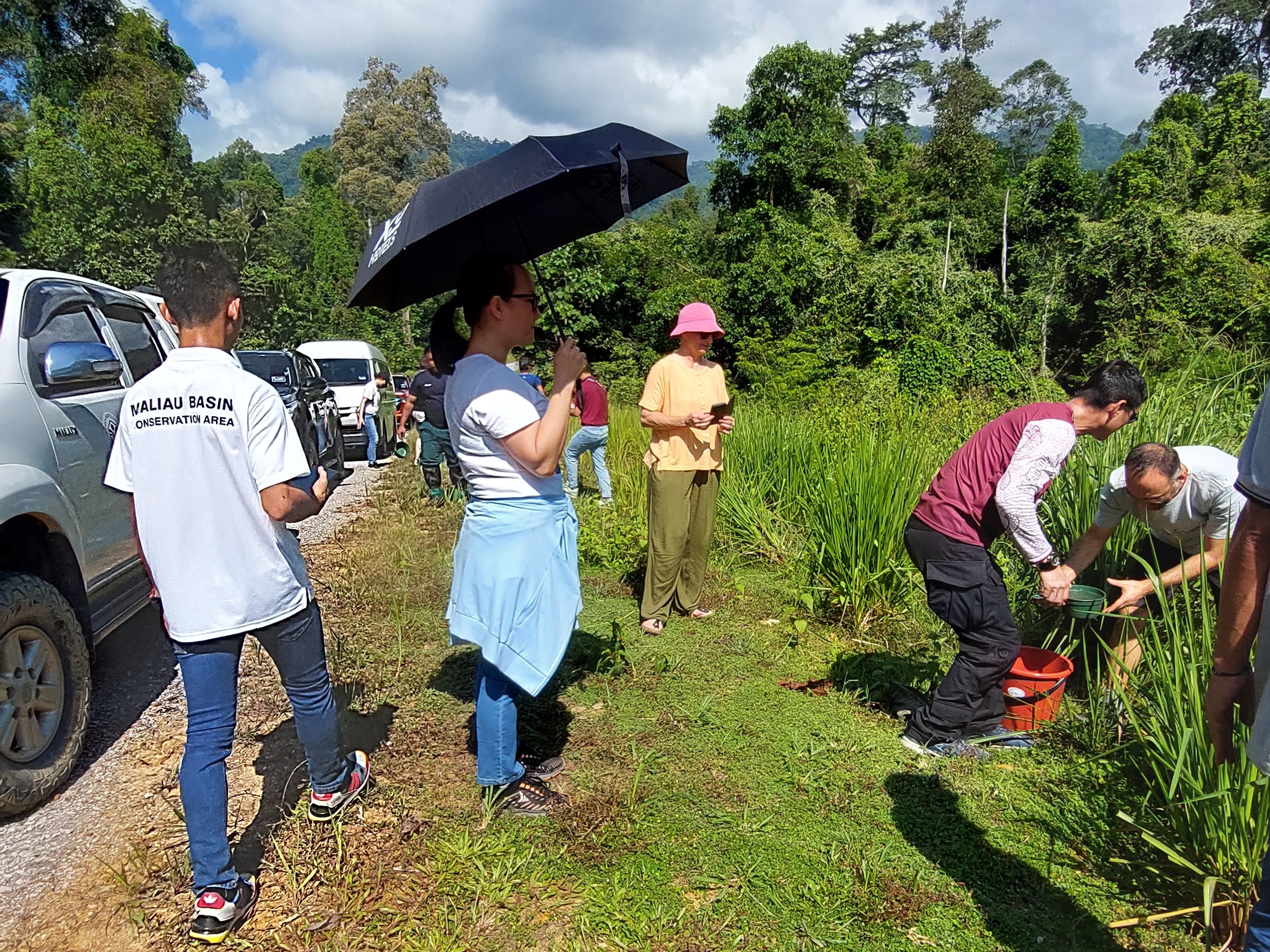
The following day, just before heading to the Tawau airport, we eagerly participated in a small planting activity at the MBCA. It was a fitting end to the training course, enabling us to apply some of the restoration techniques we had learned and make a tangible impact on the conservation area. The act of planting, which would carry our names in the MBCA, symbolised our commitment to the cause and our dedication to making a lasting difference.
Overall, the five-day training in Maliau Basin and the visit to the INIKEA project provided us with invaluable insights and hands-on experience in the field of ecosystem restoration and carbon initiatives. From exploring different ecosystems to conducting audits and interviews, we gained a deeper understanding of the challenges and opportunities involved in ecosystem restoration in addressing environmental issues and highlighted the role of organisations in promoting sustainable practices.
"During the course, I had a light bulb moment. Restoration isn't just about planting trees and calling it a day. And guess what? It wasn't all work and no play either! We laughed, we learned, as we embarked on an unforgettable journey, creating lifelong memories in the enchanting Sabah Lost World and INIKEA."
Grace Pounsin,
Participant from the MBCA
Meanwhile, Nadthanan Junpratug (Dom), a participant from Thailand, shared, "One of the most impactful aspects of this course was understanding the crucial role of carbon initiatives in combating climate change. We explored innovative approaches to carbon sequestration and learned how restoring ecosystems can help mitigate the effects of greenhouse gas emissions. Witnessing firsthand the positive impact these initiatives can have on both the environment and local communities was truly inspiring."
As we bid farewell to the MBCA and the lovely team there, we carried with us not only the knowledge gained but also a renewed sense of enthusiasm to contribute to the restoration and preservation of ecosystems worldwide.
Photos by Samentha James / Preferred by Nature
Disclaimer: This article was written by a member of Preferred by Nature's Communications team and reflects the writer's personal experience and observations during the training in Maliau Basin. The opinions expressed in this article are solely those of the writer and do not necessarily represent the views of Preferred by Nature.
Ecosystem degradation has had a profound impact on biodiversity, human health, and economic well-being, with more than 75% of the earth's terrestrial areas substantially degraded. But we believe that there is hope. The UN has declared 2020-2030 as the Decade on Ecosystem Restoration, providing an opportunity to revive the natural world that supports us all. Preferred by Nature is proud to be one of the Actors for this initiative. For more information, explore Preferred by Nature's:





